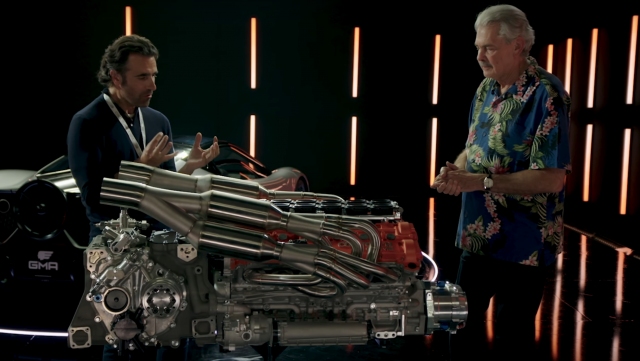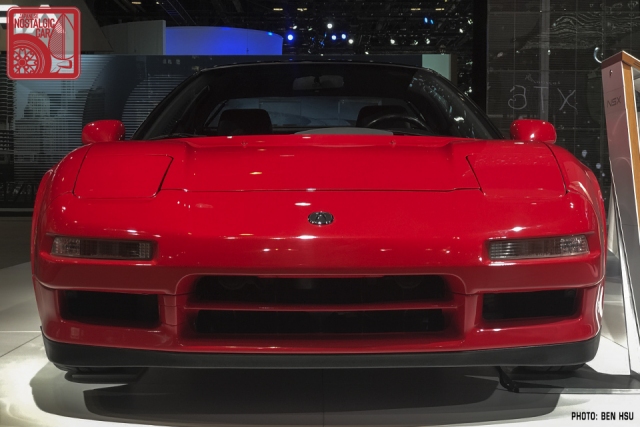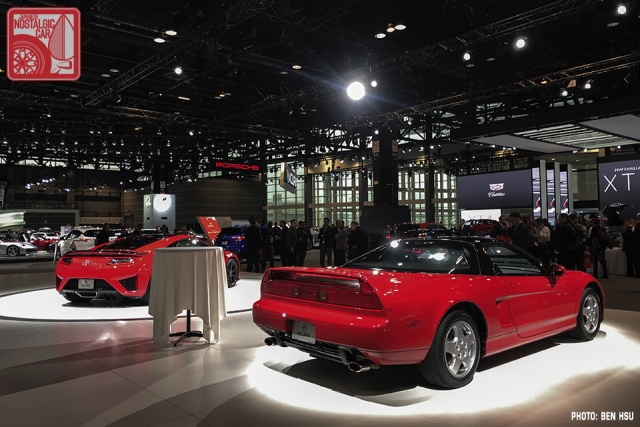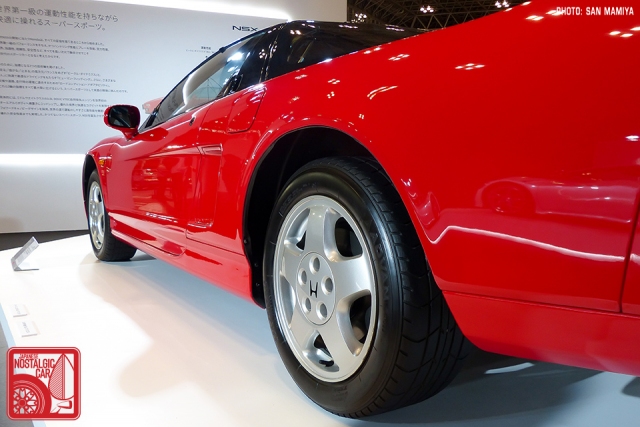Gordon Murray, perhaps the world’s greatest living supercar builder, came out with a new car this week, the GMA T.50. This isn’t typical JNC fare, but we are very much admirers of Murray’s car-building philosophy. Murray’s notions of ideal car design aligns very closely with what we love about some of the greatest classic Japanese sports cars, and in turn Murray is a great admirer of Honda’s. So, it’s worth taking the opportunity of the game-changing T.50 to look at what makes a car great in this day and age.
Murray is best known for creating the McLaren F1 road car, widely considered one of the greatest — if not the greatest — supercars of all time. But before he did that, Murray spent 20 years designing Formula One race cars, including the banned Brabham BT46 “fan car” and the McLaren-Honda MP4/4 and MP4/5, two cars that won three consecutive F1 championships (in a six-year Honda-powered streak) and helped immortalize Ayrton Senna as a racing legend.
So what makes the T.50 so great? It has “just” 654 horsepower, which is nothing in this day and age when the list of automobiles topping 1,000 horsepower is plenty long. It makes 344 lb-ft of torque, scarcely more than the new Mazda 3. It doesn’t have turbos, or hybrid power, and the front looks kind of like a Toyota MR-S.
What it does have, though, is Murray’s single-minded focus on cutting as much weight as humanly possible. While the T.50, with its composite monocoque, 1+2 seating, and V12 might look like a new F1, it’s actually a clean sheet design using 30 years of advances in materials engineering. The T.50 touches the scales at just 2,174 pounds, about the same as an AE86 Coupe, and does it without using any plastics, just aluminum, titanium, and carbon fiber.
In the reveal video and interviews, Murray has grown disillusioned with the state of modern supercars. In the years since his McLaren F1, the paragon of pureness, came out, hyper-expensive cars that theoretically could have been built with no compromises have instead gotten only more complex, less engaging to drive, and more massive. The average supercar today weighs 3,100 pounds, Murray is quick to point out, and in an excellent interview on Jalopnik, he explains that all the newfangled tech — hybrid motors, rear-wheel steering, active suspension management — exists to hide the fact that these purported sports cars weigh more than a 1990s luxury sedan.
In the 25 years since the F1, this technology has so slowly insinuated itself into cars both super and regular, that the sudden subtraction of it all is downright shocking. By deleting everything but the basics, Murray was able to “shrink wrap” his magnum opus into the footprint of a Porsche Boxster.
Plus, simple characteristics which we prize on older cars but that have been lost on modern machines have been made a priority. He reduced the nose’s scuttle height and gave the canopy a lot of glass to maximize visibility. The central tach is both analog and floodlit so as to not make the instruments overly distracting. The compact and bespoke Cosworth 4.0-liter V12 has no belt-driven accessories, not only to reduce parasitic drag and improve reliability, but to give off the look of an old school racing engine with distinctive cam covers and 12 intake bodies.
Now, prepare yourselves for a choir of glowing angels: the T.50 has an H-pattern gearbox. That’s right, there’s no dual-clutch, sequential shifting nonsense. Computerized transmissions might be faster, but as Murray told Road & Track, the point of the T.50 is not absolute speed, it’s the driving experience. Even with the F1, he didn’t “chase” numbers.
He also told R&T that “shifting gears is essential to the driving experience, and the shift itself should be great. Murray’s benchmark is the Honda S800, which he describes as having the sweetest ‘rifle-bolt’ action of any car he’s ever driven.”
Speaking of Hondas, Murray was a huge fan of the NSX. In fact, he wasn’t just a fan, but an owner. While visiting Honda’s Tochigi Research Center while working on the McLaren-Honda MP4, Murray had the chance to drive an NSX prototype. He was so inspired that he eventually got one for himself and daily drove it while developing the F1.
In an article that has since disappeared from Honda’s website (but that lives on in an English translation), Murray recalled how he had driven all the top supercars of the day — Ferrari F40, Porsche 959, Bugatti EB110, Jaguar XJ220 — but “none of these fit the pattern of the supercar we were trying to build.”
Then came the drive at Tochigi. “I remember being moved, thinking, ‘It is remarkable how our vision comes through in this car’… the moment I drove the ‘little’ NSX, all the benchmark cars — Ferrari, Porsche, Lamborghini — I had been using as references in the development of my car vanished from my mind.”
Murray’s own NSX served as a handling, packaging, and driveability benchmark for the F1. Take this passage from the same article:
When working on the development of a new car for years, it’s easy to be caught in certain pitfalls. When you drive the car under development for testing every day… in that time, you can unknowingly convince yourself you are making progress when in fact you are not. For example, it’s human nature that at the end of a long day you may want to think that your efforts to reduce low speed harshness are working better than they are. It is at times like this when you need a car to compare with. In those situations, the NSX time and again showed us the path in the areas of ride quality and handling, and also helped us recognize when we weren’t making as much progress as we thought.
Murray wanted his McLaren to have more power, but there were a few key features of the NSX that he found particularly inspiring, including its aluminum suspension and steering system:
The NSX’s suspension is truly an ingenious system, and back then I imagined the development costs must have been enormous. To achieve that unparalleled accuracy and superior ride quality, longitudinal wheel movement is allowed via the use of a compliance pivot….
The NSX was also the first car to use DBW (Drive By Wire). It felt very pleasing. DBW is when instead of using a mechanical cable, an electronic signal is used to communicate throttle position. It achieved a very natural, linear feeling throttle, and I can now hide my embarrassment and confess that I copied the idea during the development of the McLaren F1.
Murray goes on to say that he was so impressed with Honda’s engineering that he originally wanted a Honda-built 4.5-liter V10 to power the McLaren F1. He twice traveled to Tochigi in the hopes of striking a deal with Honda, but Honda remained stubbornly devoted to small engines and the horsepower-limiting Gentleman’s Agreement. In the end, McLaren went with a BMW V12.
Ultimately, though Murray wishes it had more power, he calls the NSX “a monumental work in automotive history” and ” a landmark car.” He credits it for revolutionizing the supercar world, saying “It awoke not only a lazy Ferrari, but Porsche as well and sparked advances in usability, ergonomics, and handling.” The entire article is well worth a read.
The McLaren F1 turned out to be a game-changer, and the GMA looks poised to follow in its footsteps. The T.50 is a defiant cry to stop with the ridiculous wings and vents, the technology creep, the video-game driving experiences. Murray has made no claims about the acceleration or top speed, but he does promise the most engaging drive.
Unfortunately, the from-scratch conjuring it takes to achieve the T.50 means it will cost over $2.6 million. And since only 100 examples will be produced, the driving experiencing that Murray wants so badly to put out into the world will be an impossibility for 99.999 percent of it. However, there are other ways to know the thrill of a no-nonsense driver’s car: MX-5s, AE86s, 240Zs, and so on. The JNC catalog is filled with them. Oh, and a bunch of old cars with the “H” badge.
















A great article about two great cars !!
In another YouTube clip he mentions his current daily is an Alpine A110.
He also has a Lotus Elan and a restomodded Ford Escort mk1. This guy cares about driving.
Do not forget the inspiration for the F1 doors came from the Toyota Sera.
i though toyota sera copied doors from mclaren
Sera launched in the year 1988, the McLaren was unveiled 4 years later 🙂 More than copying, it was more of an inspiration 🙂
No, Murray has said that he was inspired by the Sera’s unique doors and used it on the F1.
Whaaaat? A true, three-pedal M/T?? I’m in!!
Hmmmm… if I sold my house and everything else I own, I’d only be $2million short. I wonder what the monthly payments on a 5year loan would be. Oh, wait, I can stretch it out to a 7year loan…
Dream car, would love a blog like this one day. one can dream.
https://project-fresh.blogspot.com/
Mclaren MP4/4; mic drop…